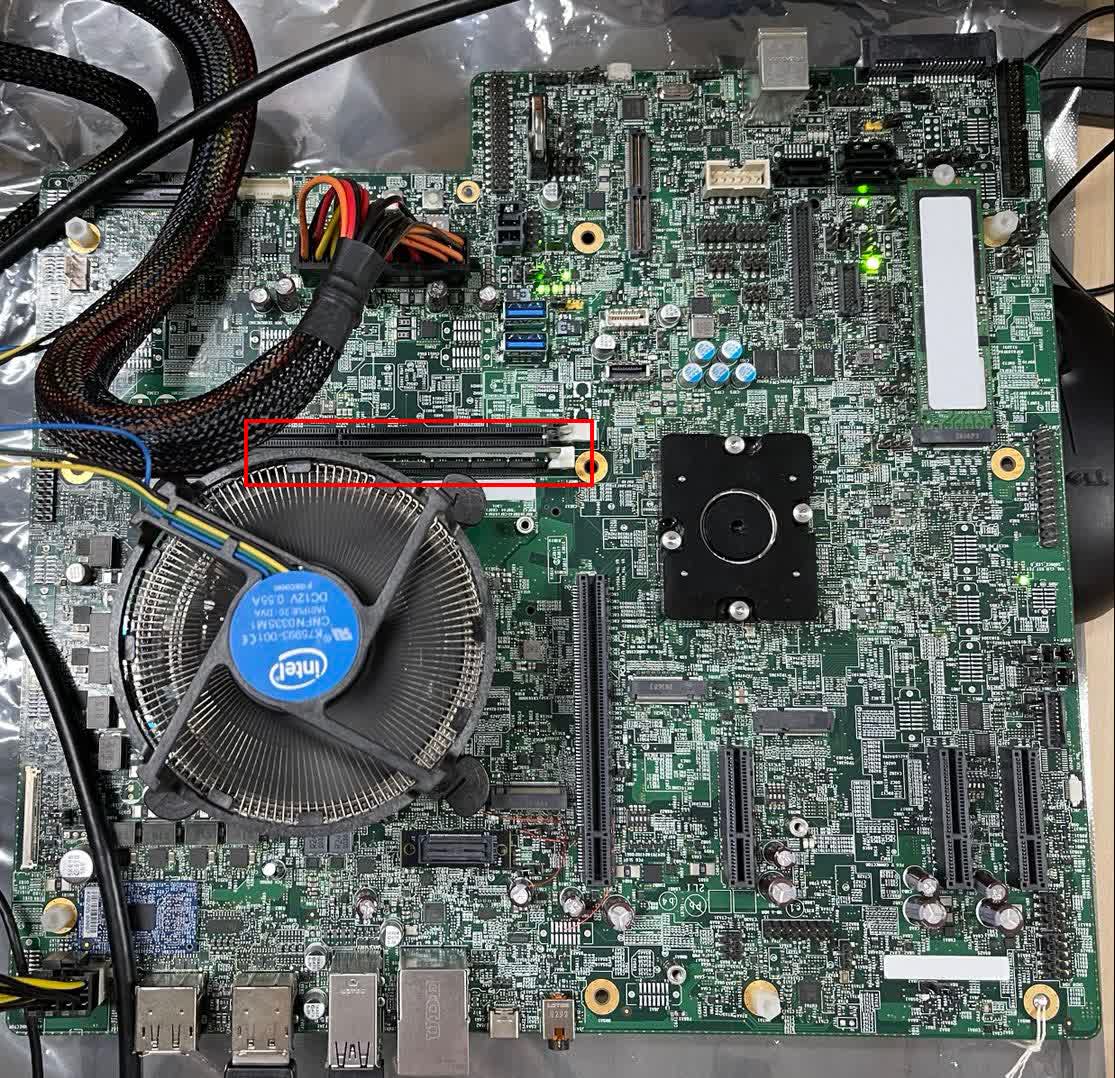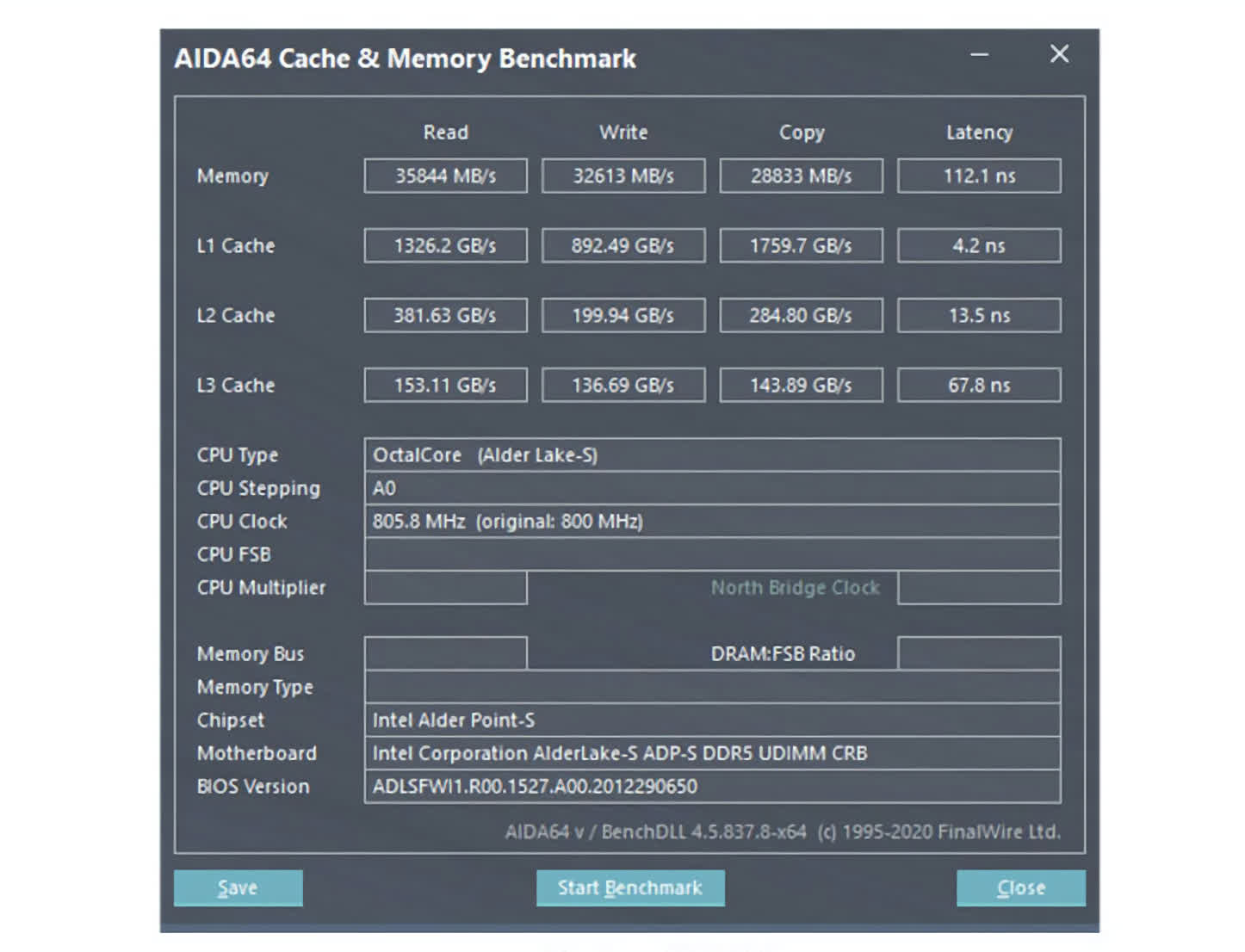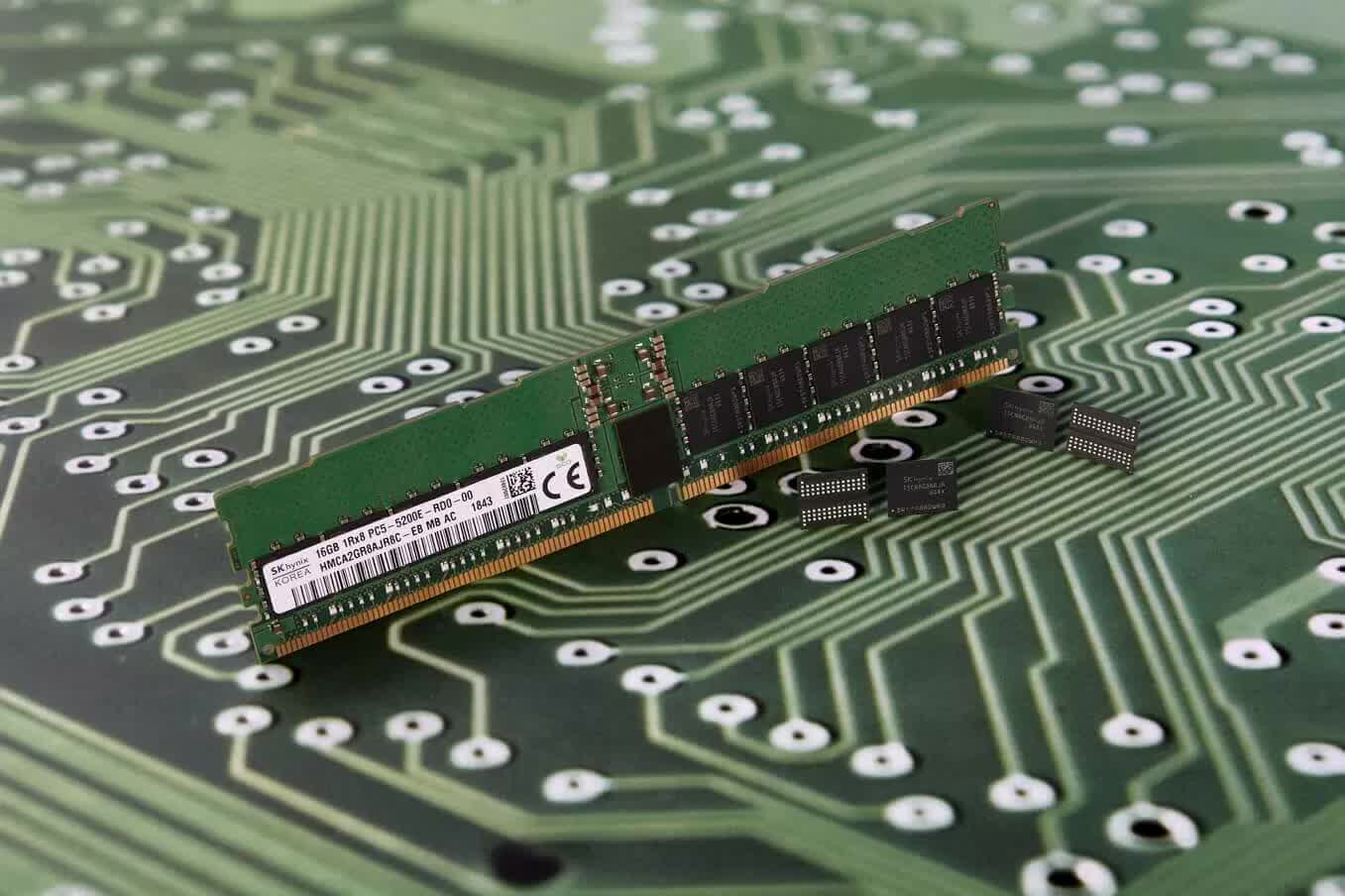Something to look forward to: We won't have to wait much longer for DDR5 to make its way into consumer products, and it looks like the benefits over DDR4 will be worth it. The new memory modules will feature higher capacity, higher bandwidth, and lower power consumption, not to mention two data channels per DIMM and integrated error correction.
Earlier today, Intel announced its 11th-gen Rocket Lake CPUs, solid performers that will come at more affordable price points than AMD's Ryzen 5000 series CPUs. However, they are a dead end for LGA 1200 motherboards, which also means they don't support DDR5 memory, and are limited to the now mature DDR4 technology.
Last year, JEDEC released the DDR5 specification, generating a lot of excitement among gamers and enthusiasts. At least on paper, the new memory tech will offer four times the capacity per die and double the effective bandwidth, while also leveraging a more power-efficient architecture when compared to DDR4 SDRAM.
Must read: Anatomy of RAM
Industry leaders like Micron and SK Hynix started sampling DDR5 to partners in the enterprise space at the beginning of last year, and others like TeamGroup are scrambling to validate their modules with motherboard manufacturers. That said, we didn't see any of these companies showcasing what performance would look like in practice.

Today, Chinese manufacturer Shenzhen Longsys Electronics revealed the first benchmarks of DDR5-4800 memory using one of Intel's Alder Lake-S engineering samples. The company is currently working on two DDR5 modules, a 16GB single-rank design and a 32GB dual-rank design, both operating at 1.1V with a CAS Latency of 40.

Longsys compared the DDR5-4800 memory with what appears to be DDR4-3200, using a combination of AIDA64 and Ludashi, the latter being a popular Chinese benchmarking software. In AIDA64's read, write, and copy tests, the DDR5 memory module scored 39 percent, 36 percent, and 12 percent higher, respectively. However, it also showed almost double the latency versus the DDR4 modules.
In the Ludashi Master Lu benchmark, the DDR5 module obtained a score of just over 190,000 points, while the DDR4 module scored less than 92,000 points. This is an impressive result, and eventually DDR5-6400 memory will come to surpass it with even better numbers.
According to roadmaps, the earliest we could taste that kind of DDR5 performance in a consumer product will be when Intel releases Alder Lake-S processors. The company says that could be as soon as the second half of this year, but that timeline could very well slip into 2022 as the company is gearing to retake its position of "unquestioned leader in process technology."
